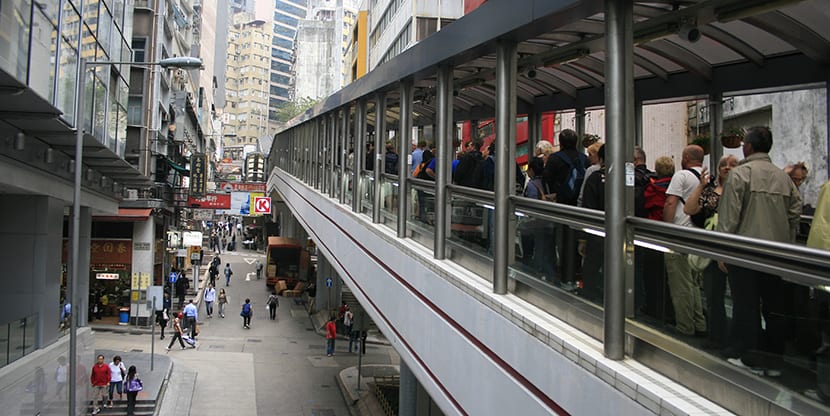
Is there anything fun about escalators when we are adults? In principle no, more than the comfort of climbing or descending without effort, but if we go to visit Hong Kong it is another story.
Hong Kong's escalators are a real eye-catcher. Of course people here use them all the time and they are part of the city's transport system, but for the traveler they are undoubtedly an original, fun and unforgettable tourist attraction. Where else in the world do you travel the longest escalator in the world built outdoors?
Hong Kong and its stairs
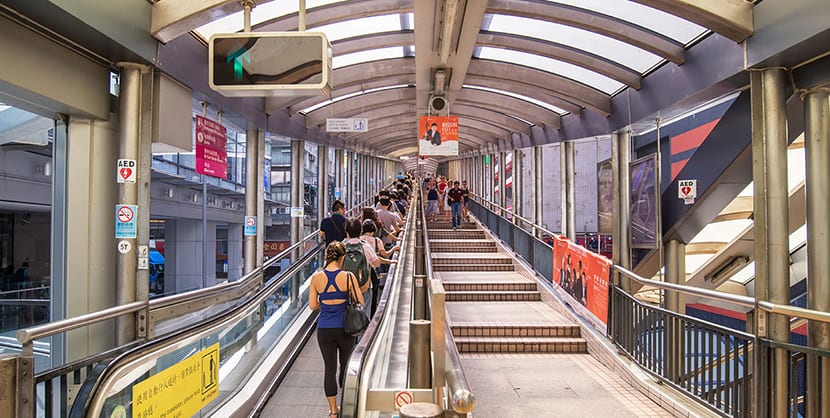
We must first remember that since 1997 Hong Kong and its territories have been part of the People's Republic of China. For about a century they were in british hands But that year the lease expired and China claimed its own. If you are over 30 you can remember the handover ceremony and what was said on the news about what would happen to the people and to the capitalist system in a communist world.
Hong Kong today is an autonomous territory where China proves that of "one country, two systems" (it has its own legislative, judicial and executive powers). The city rests on the Pearl River Delta and the territory is one of the most densely populated in the world. There are more than XNUMX skyscrapers and everything is really very narrow, so much so that the average distance from the port to the hills is just over a kilometer and in large part it is land reclaimed from the sea.
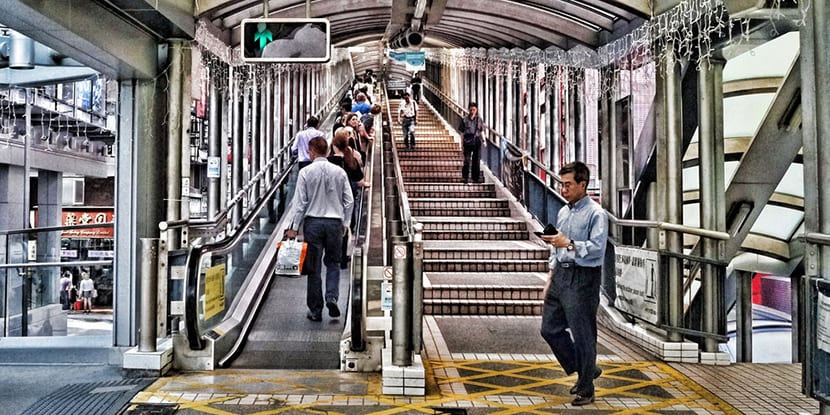
People live crowded, unless you have money and can afford a flat in a tall building. Is definitely, a vertical city where people live, sleep and work almost always several meters above the ground. Fantastic! At least to visit ...
You can imagine the traffic chaos there may be in Hong Kong, right? In the 80s the problem was pressing, especially in the sector between the Middle Levels and the Central zone, so solutions began to be thought of and the most brilliant and appropriate was the one proposed by some engineers: a external transport system.
It was designed in 1987 and started working in 1993. Obviously, it was very expensive and it was not without criticism and budgets that went through the roof.

Hong Kong escalators join Queen's Road central, in the Central area, with Conduit Street in the Middle Levels or Mid-Levels. If you see a map, the route is crossed multiple times by narrower streets and it is that beyond going up and down many of these intermediate sectors have taken on a life of their own and have tremendous commercial activity between shops, pubs and restaurants.
The whole system It is 800 meters long and can climb vertically 135 meters. It is not a single staircase but a system of 18 escalators and three automatic walkways. The tour ends in 20 minutes if you stay still but you reduce it a lot if you walk up the stairs. If this system did not exist, the route would be much longer and you would have to go up or down in a zig zag.
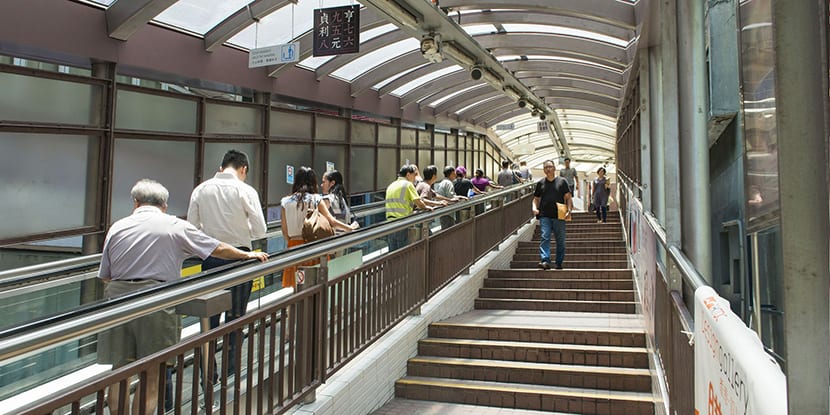
But for people it is super useful and apparently around one hundred thousand pedestrians use the stairs per day. From 6 am to 10 am the stairs run down the hill and from 10 am to noon up the hill. If you want to go down when they go up, for example, you can use the normal stairs and the ramps that run parallel to the automatic ones: a total of 782 steps.
Hong Kong escalator attractions
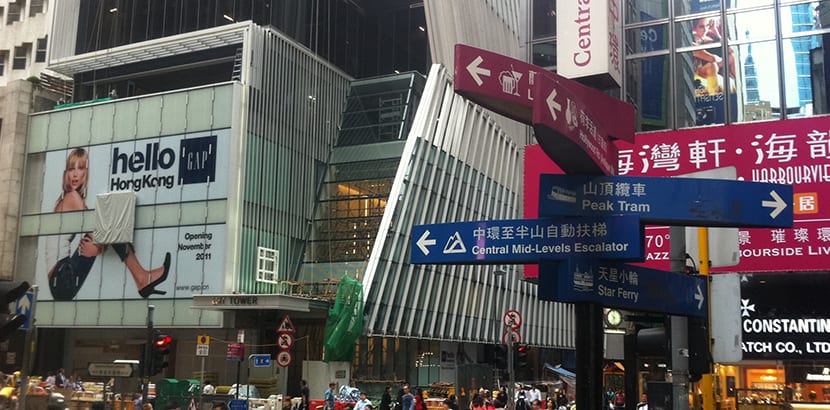
The most usual thing is to start the walk from below, from Queen's Road Central. Right in front you have the Central market which is a site worth visiting because it was built in 1938 in the Bauhaus style. The place has always been a market and in recent years it has been recycled into a green oasis with shops, gardens and restaurants.
Having seen this, you can start the tour by taking the first automatic walkway to Cochrane Street, across Stanley Street, a very quaint street with tea shops. The walkway takes you to the pedestrian bridge over the wellington street, a colorful portrait of Hong Kong itself, over which crosses the second automatic walkway that takes you through Cochrane to Lyndhurst Terrace, a site built in the first half of the XNUMXth century that used to be the Red Light District of Europeans.
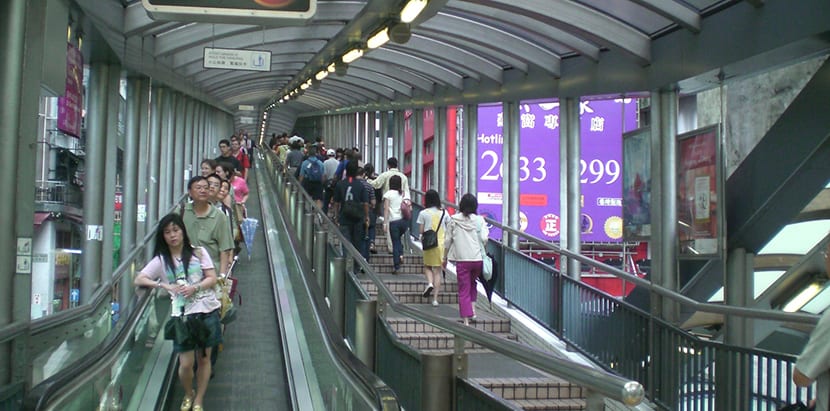
Finally you have the entrance to the third section of the automatic gangway, and the last one, that continue down Cochrane Street until it meets Hollywood Road. There is a pedestrian bridge that crosses and runs along Hollywood Road to Shelley Street.
You will see a picturesque Central Police Station with Doric columns. built in 1864. and very close to the Victoria Prison, both currently subject to remodeling as cultural centers.
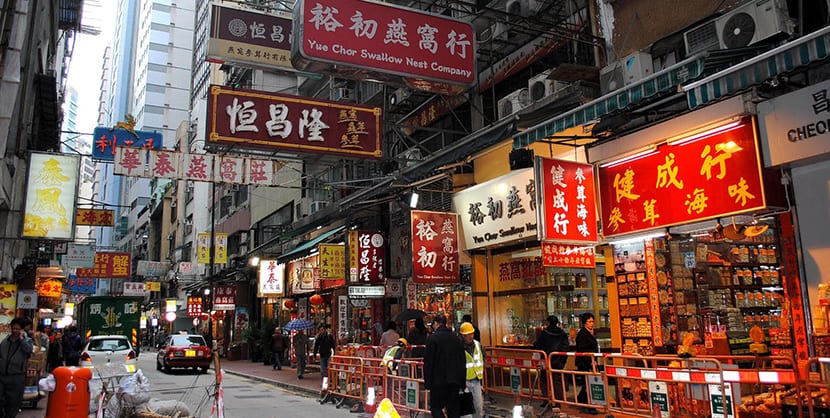
In fact, Hollywood Road is an important street, one of the first to develop in colonial Hong Kong. Today antique houses and art galleries abound. Also just over 300 meters from its pedestrian bridge is the Man Mo Temple, one of the most popular among tourists since it dates back to 1847.
And if you like curiosities or take curious photos then a few meters away you will find the Ladder Street, right in front of the temple, an old opium den, today it houses curiosity shops, its stalls and its bazaar.

From Hollywood Road you go up to Staunton Street via the escalators They take you from the footbridge to Shelley Street. This section is short but from Shelley the longest sections begin, which take you up to the Middle Levels. It is precisely in this short section that a popular district baptized as SoHo. Before it was dedicated to the sale of things for funerals but today it is a real fun and nightlife district.
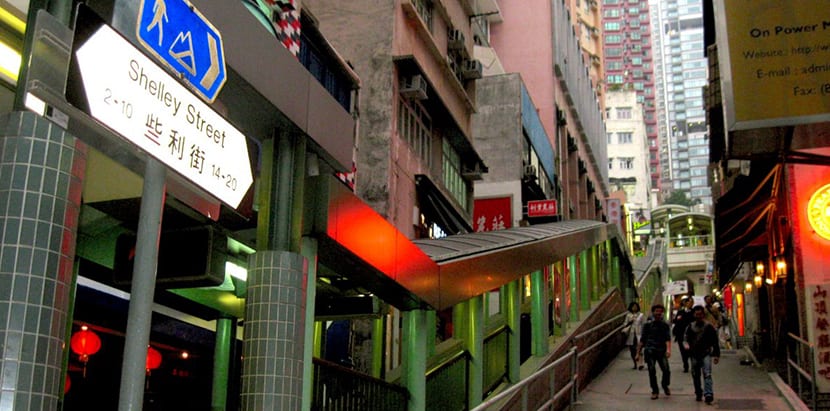
There are restaurants, cafes, shops and bars both day and night on Shelley or Staunton streets. The stairs later leave you at the intersection with Elgin Street, still in SoHo, with more bars and restaurants. The next crossing is with Cain Street, point at which you must cross a U-shaped bridge that connects the two flights of stairs, the one you leave and the one you must take to continue your journey to Mosque Street.
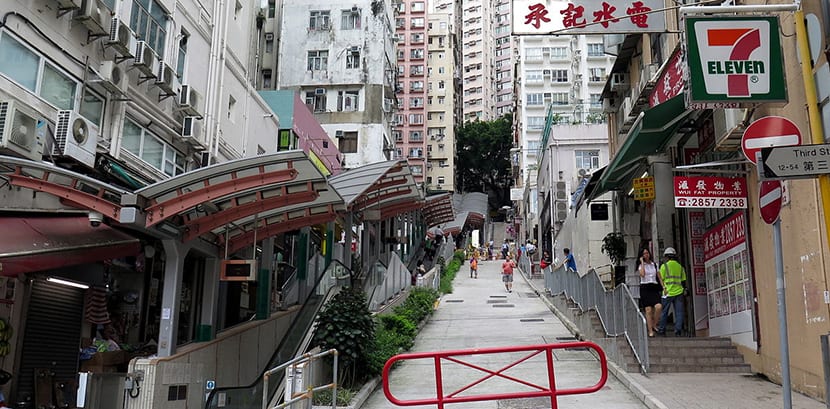
In the area you can visit the Dr. Sun Yat-sen Museum, fighter for the construction of a modern China and the Museum of Medical Sciences. This area is quieter than SoHo and gradually becomes more residential. If you like the history of Asia in one of these houses lived Dr. Rizal, a fighter of the Philippine Revolution. It is the area of Rednaxela Terrace and right in front there is a mosque dating from 1915.
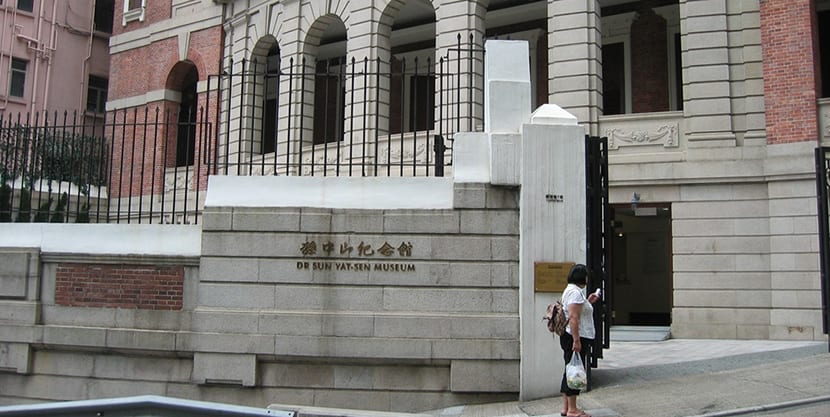
And so we come to final stretch, the last stretch from Mosque Street, over another pedestrian bridge across Robinson Road to the end of the transportation system in Conduit Road in the Middle Levels. It is a very residential area and does not have much action but it is the end point of the circuit and we will not miss it.
Also, if you plan to visit the Hong Kong Zoological and Botanical Gardens They are only a 15 minute walk away.

Finally, to go down you can go down the stairs but if you are tired or want to use a means of transport you can take the green minibuses, number 3, just 20 meters from the terminal station of the stairs. It operates with intervals of between 5 and 10 minutes and leaves you at the MTR Central Station.